Purchasing a diamond ring, whether it’s for a special occasion or personal indulgence, is a decision that should be approached with care. Since diamonds are meant to endure, it’s essential to ensure a satisfactory purchase without any doubts.
How can you be confident that you’re acquiring exactly what you desire at a fair price? How can you differentiate between natural and lab-grown diamonds?
To assist you, we have compiled a comprehensive guide outlining key factors to consider before selecting the perfect diamond ring. With this knowledge, you’ll be equipped to choose a brilliant gem that will captivate everyone you encounter. Let’s explore what we have in store for you!
Diamond Price Chart
DESIGN YOUR OWN ENGAGEMENT RING: START WITH A SETTING OR START WITH A DIAMOND. IT’S REALLY UP TO YOU!
| Shape | Top Quality D/E, FL/IF | Our Recommendation G/H, VS2/SI | The Lower End I/J SI1/SI2 |
|---|---|---|---|
| Round | $23,200 | $7,710 | $6,100 |
| Princess | $15,200 | $6,280 | $5,000 |
| Cushion | $15,790 | $5,870 | $3,730 |
| Emerald | $16,050 | $7,760 | $5,140 |
| Oval | $18,950 | $7,390 | $5,760 |
| Pear | $17,800 | $7,580 | $5,710 |
| Marquise | $21,320 | $9,210 | $5,150 |
| Radiant | $20,100 | $7,020 | $4,100 |
| Asscher | $19,610 | $7,720 | $4,360 |
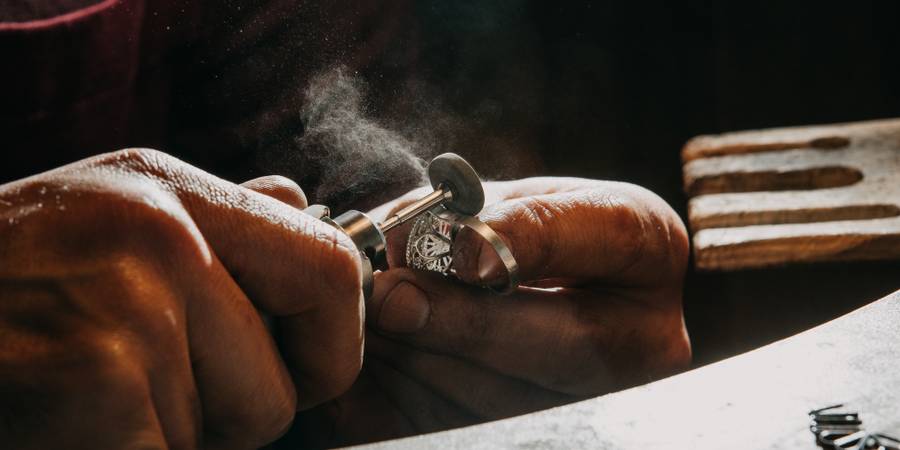
Always Use Reputable Sources
The diamond ring industry continues to thrive, given the substantial amount of money involved. Unfortunately, this also creates an environment ripe for scammers and fraudsters.
Whether you choose to purchase diamonds in-person or online, it is crucial to only engage with reputable businesses. When buying diamond rings or any other jewelry, take the time to vet the seller and ensure their credibility.
To protect yourself, it’s important to familiarize yourself with common tricks used by unethical jewelers to deceive customers before making a purchase. Here are a few to remember:
- Price Manipulation:
Exercise caution when encountering wholesale sales or significant discounts. It is suspicious when an expensive diamond engagement ring suddenly becomes available at a fraction of its original price.
Such deceptive tactics often involve artificially inflating prices beforehand, making the discounted price appear astonishingly low. Remember that the price of a properly evaluated diamond tends to remain consistent across reputable stores and will rarely be sold for a fraction of its value.
- Bait and Switch:
The “bait and switch” technique is another tactic employed by dishonest jewelers. They may lure you in with a reasonably priced diamond ring displayed in-store, only to inform you later that the ring you selected is no longer available. Instead, they will offer a more expensive alternative.
Typically, the payment made for the initial ring is converted into non-redeemable store credit, pressuring you to exceed your predetermined budget. Protect yourself by purchasing only from reputable sellers and avoid making payments until you have received the goods. Additionally, genuine jewelers often offer a money-back guarantee.
- Diamond Investment:
While diamond rings may sound like a prudent investment, they rarely hold their value as anticipated. Be cautious of claims suggesting that buying a diamond ring is a wise investment for the future.
Honest jewelers seldom advise purchasing a diamond ring solely for its resale value, as the reality is that a diamond ring will likely retain only 30-40% of its original price at best.
If you are genuinely interested in diamond investments, consider exploring stocks related to diamond mines or large jewelry-making companies like ALROSA, De Beers, or Rio Tinto Diamonds.
By familiarizing yourself with these tactics and conducting thorough research, you can make a more informed decision when purchasing a diamond ring and avoid falling victim to scams.
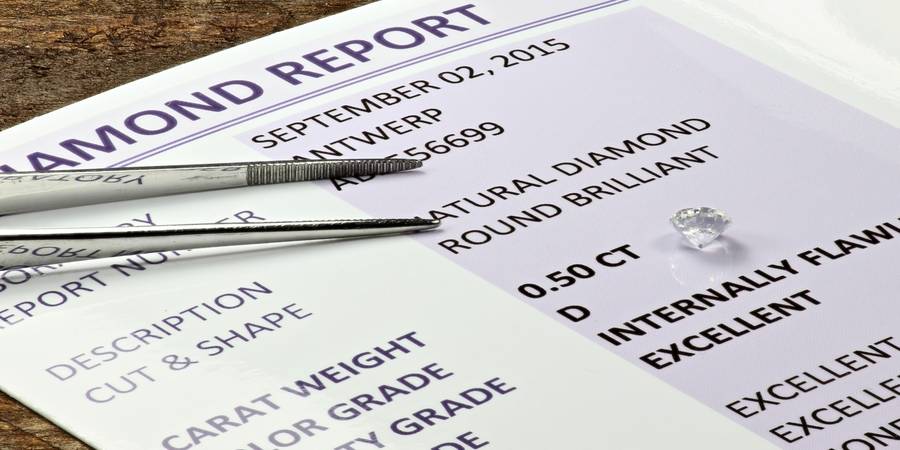
Certification
Certification serves as the diamond’s identification card, providing information about its color, clarity, cut rating, and other essential characteristics. It is not only informative but also serves as proof of the diamond’s authenticity.
If you have doubts about the legitimacy of a diamond, there are techniques available to determine its authenticity. However, it is crucial to never accept a diamond that lacks proper certification from a reputable gemological institute.
The two most respected institutes in the diamond industry are the GIA (Gemological Institute of America) and AGS (American Gem Society). While there are other third-party laboratories that grade diamonds, reputable sellers typically rely on certifications from these esteemed institutes.
The insistence on certification from specific institutes is to safeguard buyers from potential scams, where sellers may attempt to deceive customers into purchasing lower-quality diamonds at the price of higher-grade ones.
Regardless of the price or claimed characteristics, it is crucial to reject uncertified diamonds. The characteristics outlined in a certified grading report significantly influence the diamond’s value and should always be obtained from a certified source.
Experienced diamond traders often mention a dubious phrase in the retail business: “You are here to buy a diamond ring, not a piece of paper.” This phrase is often used to accompany a surprisingly low-priced ring, implying that the diamond is of such poor quality that it cannot be certified or sold legitimately.
In summary, it is essential to never purchase a diamond without proper certification. Certification provides assurance and guarantees that the diamond meets the necessary standards of quality and authenticity.
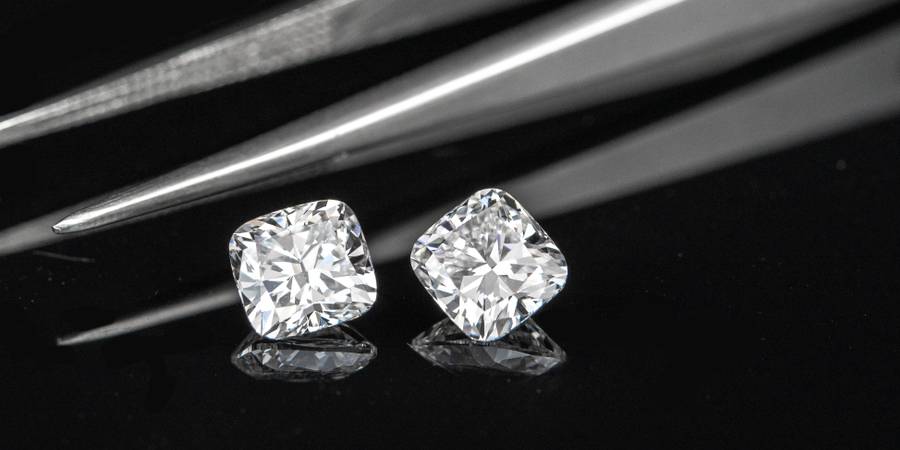
Diamond Grading Characteristics – The Famous 4CS
As previously mentioned, diamonds are certified and graded based on four important characteristics, often referred to as the 4Cs. Familiarizing yourself with these characteristics will enable you to read grading reports and understand jeweler terminology more effectively.
The 4Cs of a diamond are as follows: Cut, Color, Clarity, and Carat. Each of these factors contributes to the quality and subsequently the price of a diamond. Let’s explore them in more detail to enhance your understanding and make a more informed assessment of a diamond’s true value.
- Cut
Considered the most crucial aspect, the cut directly influences a diamond’s sparkle. You may have heard of well-cut diamonds, and this is precisely what is being referred to. Well-cut diamonds exhibit exceptional brilliance and sparkle, while poorly cut diamonds lack vibrancy and reflectivity. In simple terms, it relates to how light passes through the diamond’s crown. The cut grading typically ranges from Excellent to Poor, with five grades in total.
- Color
Although extremely rare exceptions exist, most natural diamonds possess some degree of color. Colorless diamonds are the rarest and consequently the most expensive. On the other end of the spectrum, yellow diamonds are more common and tend to be more affordable. The color grading of diamonds uses letters from D to Z, with D through F representing colorless grades and S through Z representing very light yellow hues.
- Clarity
Clarity refers to the presence of imperfections and impurities within a diamond. These imperfections manifest as tiny markings visible on the diamond’s surface. The clarity grading scale ranges from Flawless (FL), which is extremely rare (less than 1% of diamonds), to other categories that indicate varying levels of these marks. The least desirable clarity grade is called Included 3 (I3), but it is also the most commonly found grade.
- Carat
Carat denotes the weight of the diamond and often receives significant attention, although all the characteristics influence the price equally. People are naturally drawn to larger diamonds. Understanding the weight of a diamond from the grading report is important. Carats are divided into points, with one carat equivalent to 100 points. For example, half a carat is 50 points, and two carats are 200 points.
Now that you have a grasp of the basic diamond terminology, you are better equipped to intelligently purchase a diamond ring for that special occasion.
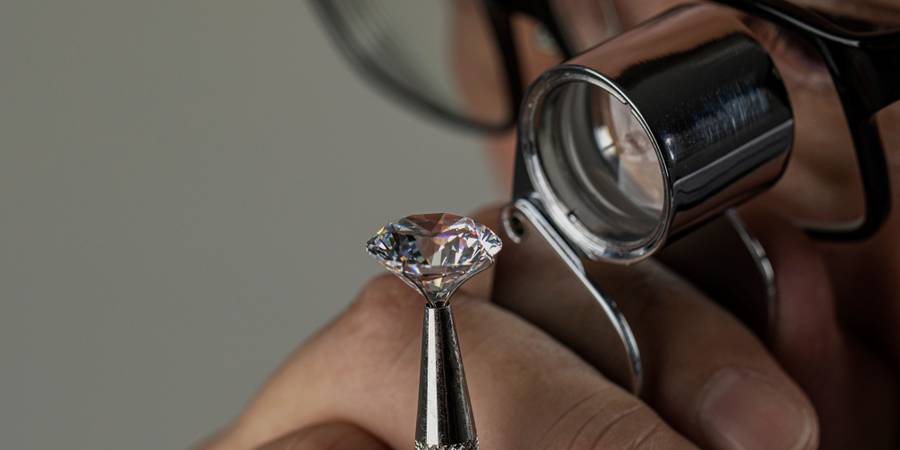
Making Sure You’ve Got the Real Thing
Diamond certification is essential, but when significant sums of money are involved, it’s crucial to ensure that the diamond you’re holding is genuine. While conducting a spontaneous test on the spot is advisable, absolute certainty requires additional measures.
Understanding the 4Cs provides valuable insights into a diamond’s characteristics, but it doesn’t equip you with the knowledge to distinguish between a real and a fake diamond.
One effective approach is to carry a diamond tester, a portable device that can easily fit in your pocket and provide an immediate and definitive answer regarding the authenticity of a diamond.
Alternatively, if you want to eliminate uncertainty when purchasing diamonds, you can enlist the services of a diamond expert who can accompany you and offer their professional opinion on the diamond you’re interested in. Their expertise and experience can provide invaluable guidance in making an informed decision.
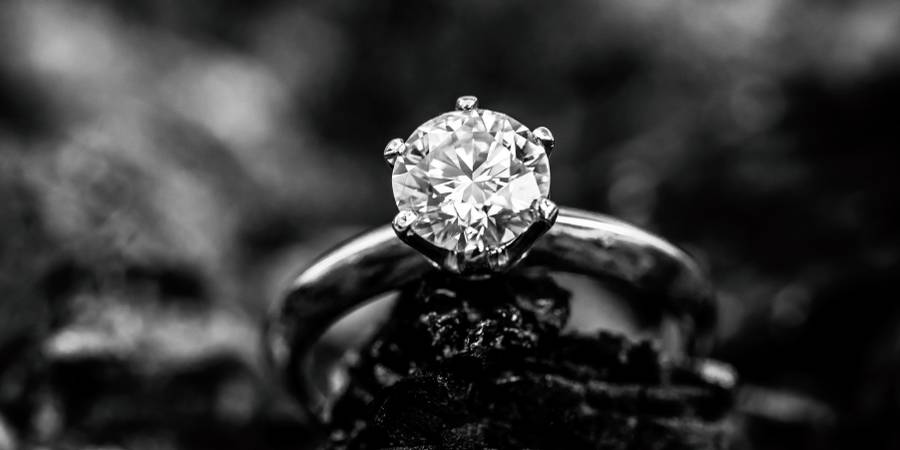
Conclusion
Never underestimate the significance of love when it comes to the beauty of diamond rings. However, it is equally important to navigate the process of buying a diamond ring wisely to avoid falling victim to scams or ending up with a low-quality or fake diamond.
Exercise caution when dealing with questionable individuals, as diamond ring purchases are not an everyday occurrence. Beware of sudden and unbelievable discounts or “once in a lifetime” sales. If the price seems too good to be true, trust your instincts, as it likely is.
Always insist on a diamond certificate, and if one is not provided, don’t hesitate to politely decline and walk away. Now that you have the knowledge to read certificate reports, you can make informed decisions.
Harness the knowledge you’ve acquired about diamonds and their exceptional qualities, as well as the factors that contribute to their value, to your advantage. We wish you the best of luck in finding the perfect ring that will beautifully convey your emotions and intentions. May our article assist you on your journey.


